RCC Buildings Topic Team – Twin Cities/MN Multi-City Implementation Team https://rccmn.co/buildings/
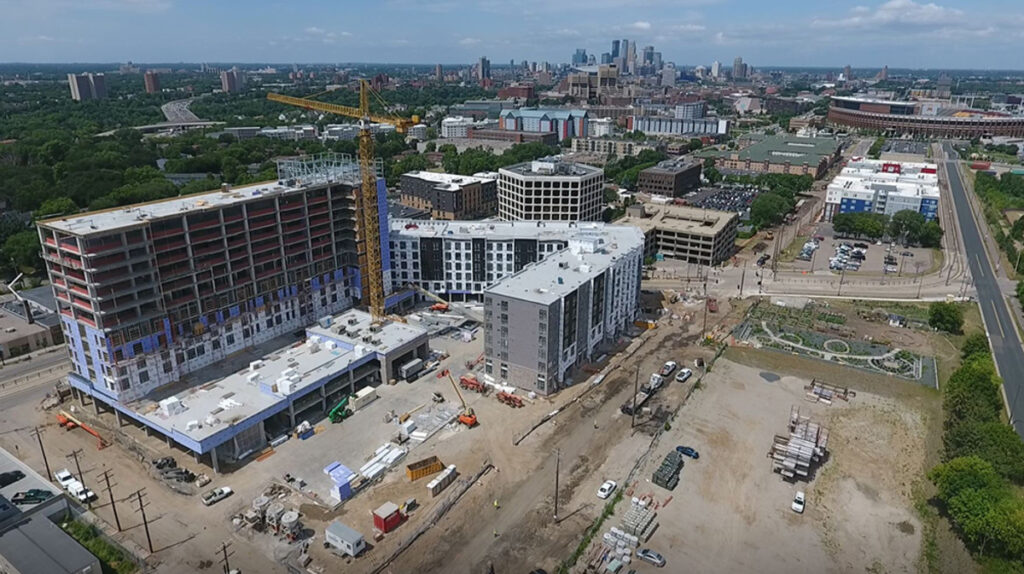
Advancing DISTRICT networked ground sourced heating & cooling in in new developments in MN.
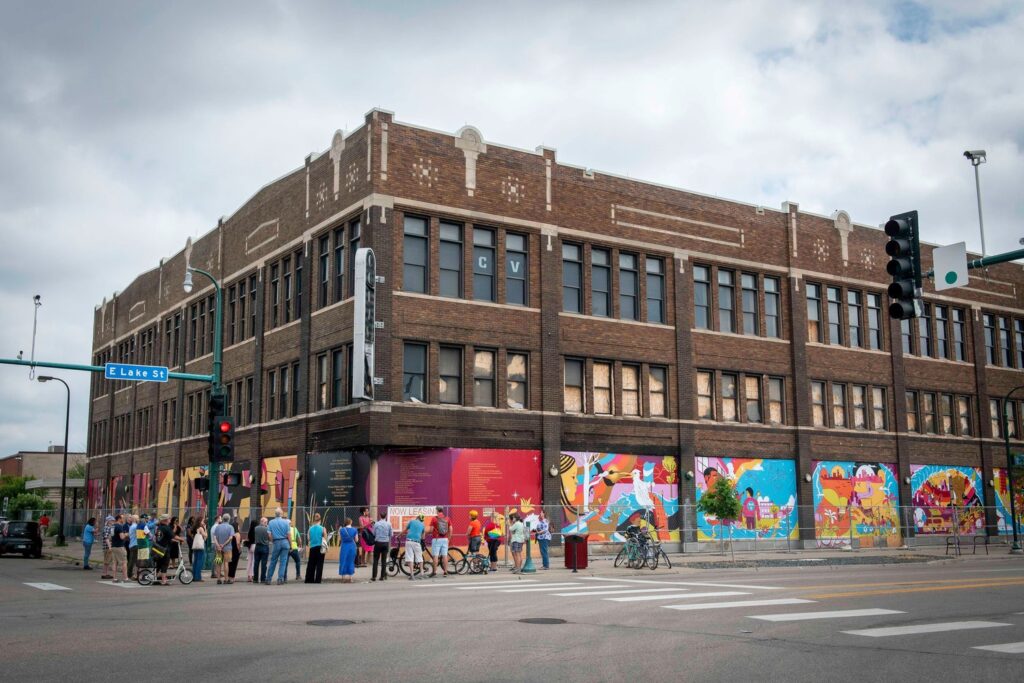
RCC receives Minneapolis Foundation Climate Action Grant
The grant will support planning for a ground-source heating and cooling district for Hiawatha-Lake residential and commercial customers and property owners in South Minneapolis to reduce energy costs for residents and businesses, cut carbon emissions, and build climate resilience
Resilient Cities and Communities is excited to be one of the 13 grantees of The Minneapolis Foundation’s Climate Action Awards.
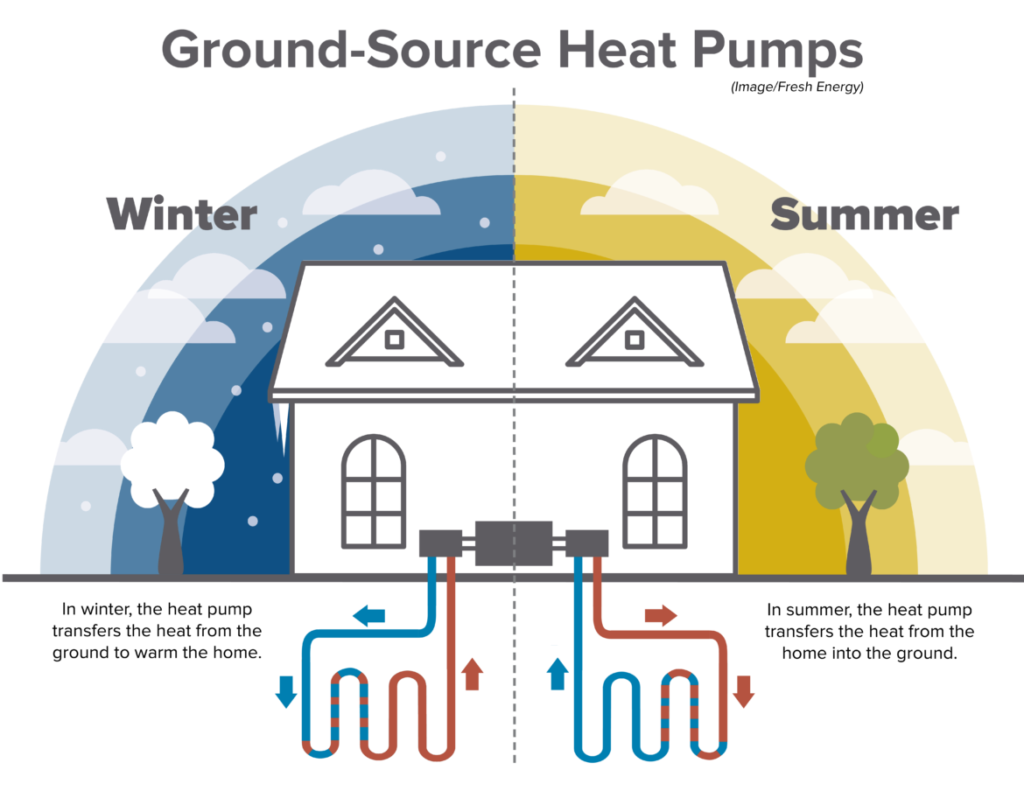
How does Ground Water Sourced Geothermal Work?
Geothermal systems have three essential parts: the air handling system that transfers the air, the groundwater heat exchanger that takes heat from the ground or transfers heat back into the earth and the geothermal loop that moves heat between the air handling system and the groundwater exchanger. Ground-water based geothermal taps into the constant 40 degree temperature of the aquifers under our cities through single wells that fit well in urban environments
Developers for Networked Ground Source Geothermal
Ever Green Energy https://www.ever-greenenergy.com/
Darcy Solutions – https://darcysolutions.com/
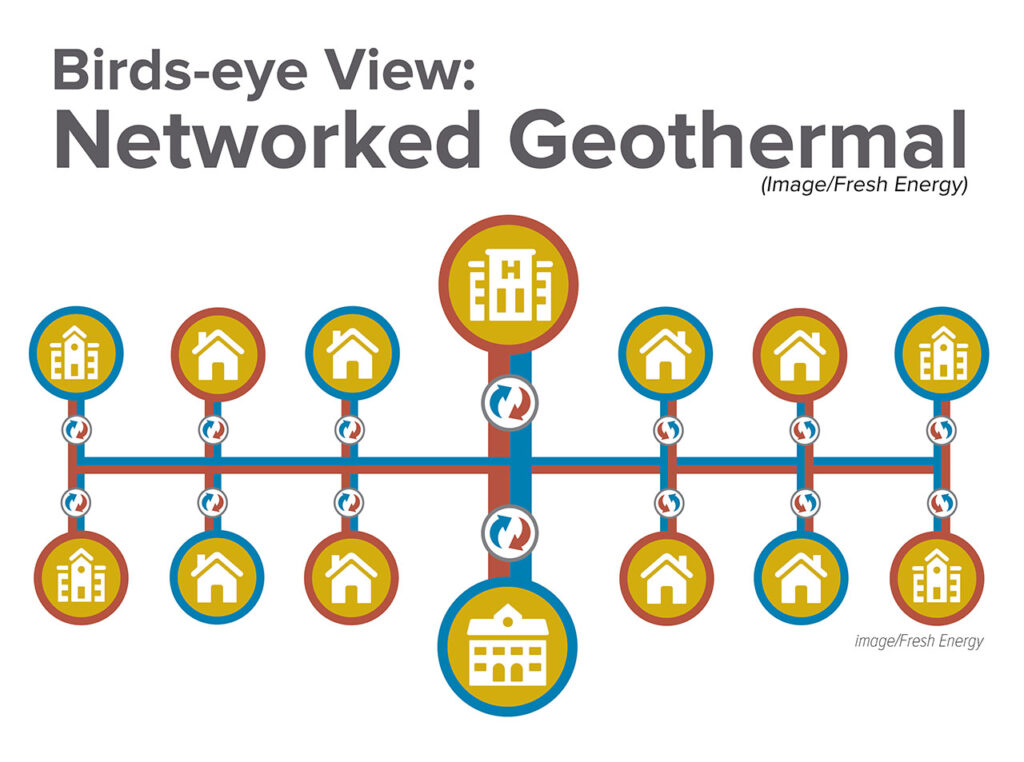
- What is Networked Geothermal? (also called Geogrids) describes the connection of a number of ground-source heat pumps to one another to form a shared loop network. This means connecting nearby homes and businesses together to form a system or network of heat pumps. A network of ground-source heat pumps can move heat from the ground to a building and between a building and another building. Having a diverse group of buildings that have different heating and cooling needs can help balance out the system. Waste heat from cooling a building in the summer, for example, can be captured and delivered to buildings that need it. This has many advantages, such as more efficiency, lowering energy costs, and reducing natural gas use and cutting CO2 emissions from buildings.
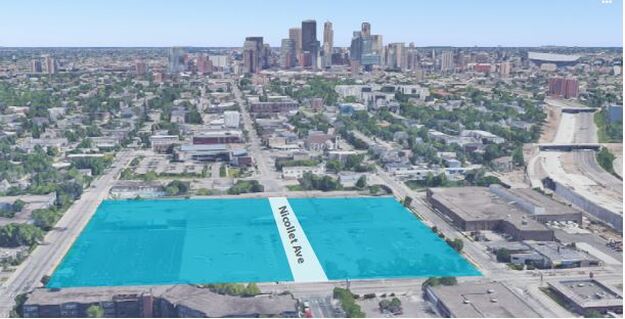
District Heating and Cooling Opportunity Sites in MN
Arden Hills – Rice Creek Commons
Duluth – Superior Ave Reconstruction
Minneapolis – Towerside, Hi-Lake, Nicollet/Lake, Upper Harbor Terminal
Rochester – Medical Destination Center
St. Paul – Hillcrest, Ford Site
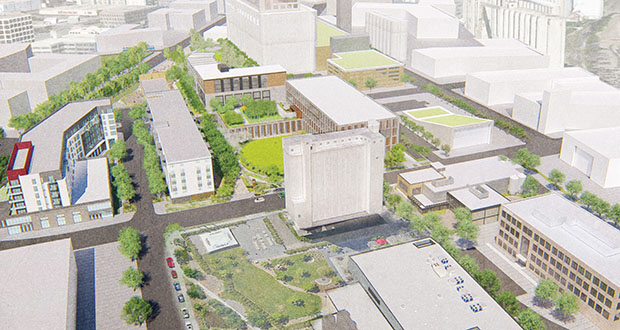
Sustainable: Aquifer project offers green energy model
By: Frank Jossi April 6, 2021 Finance & Commerce
Prospect Park may soon be the home of one of the largest projects ever built in the United States to heat and cool large buildings using underground aquifers.
Test wells underway now should confirm the viability of employing an aquifer system for heating and cooling two apartments and one proposed office building in Towerside Innovation District, a 370-acre area north of University Avenue between the University of Minnesota and Highway 280. The project is a collaborative effort that includes district energy consultant Ever-Green Energy, Towerside, the developer Wall Cos., and Minneapolis.
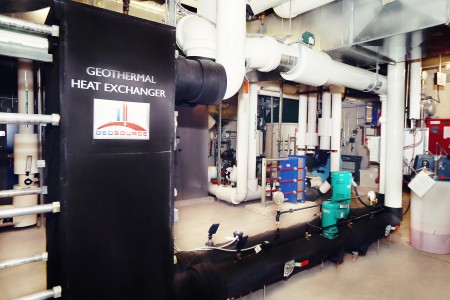
Successful Toronto Case Studies for District /Networked Geothermal Heating and Cooling Geoexchange Case Studies in the Greater Toronto Area These case studies summarize the experience of a number of geoexchange system owners/operators, and in some cases also provide monitoring data on system performance. They discuss how and why the project were conducted, design of the system, details on implementation, project costs, and performance data, where available. The case studies are based on the findings from the Toronto and Region Conservation Authority (TRCA) companion reports titled “Closing the Loop: A Survey of Owners, Operators and Suppliers of Urban Geoexchange Systems in the Greater Toronto Area” and “Performance Assessment of Urban Geoexchange Projects in the Greater Toronto Area.”
